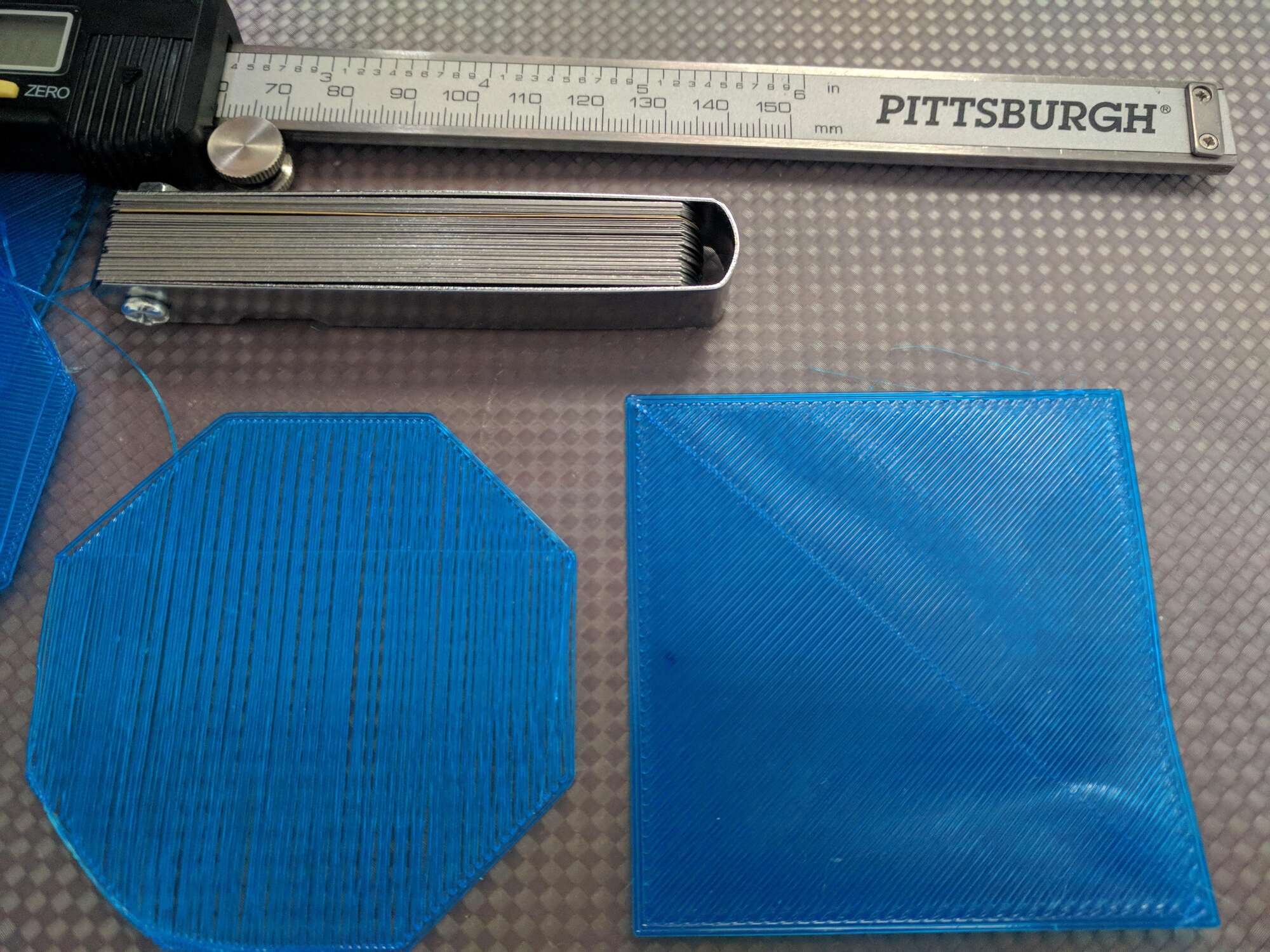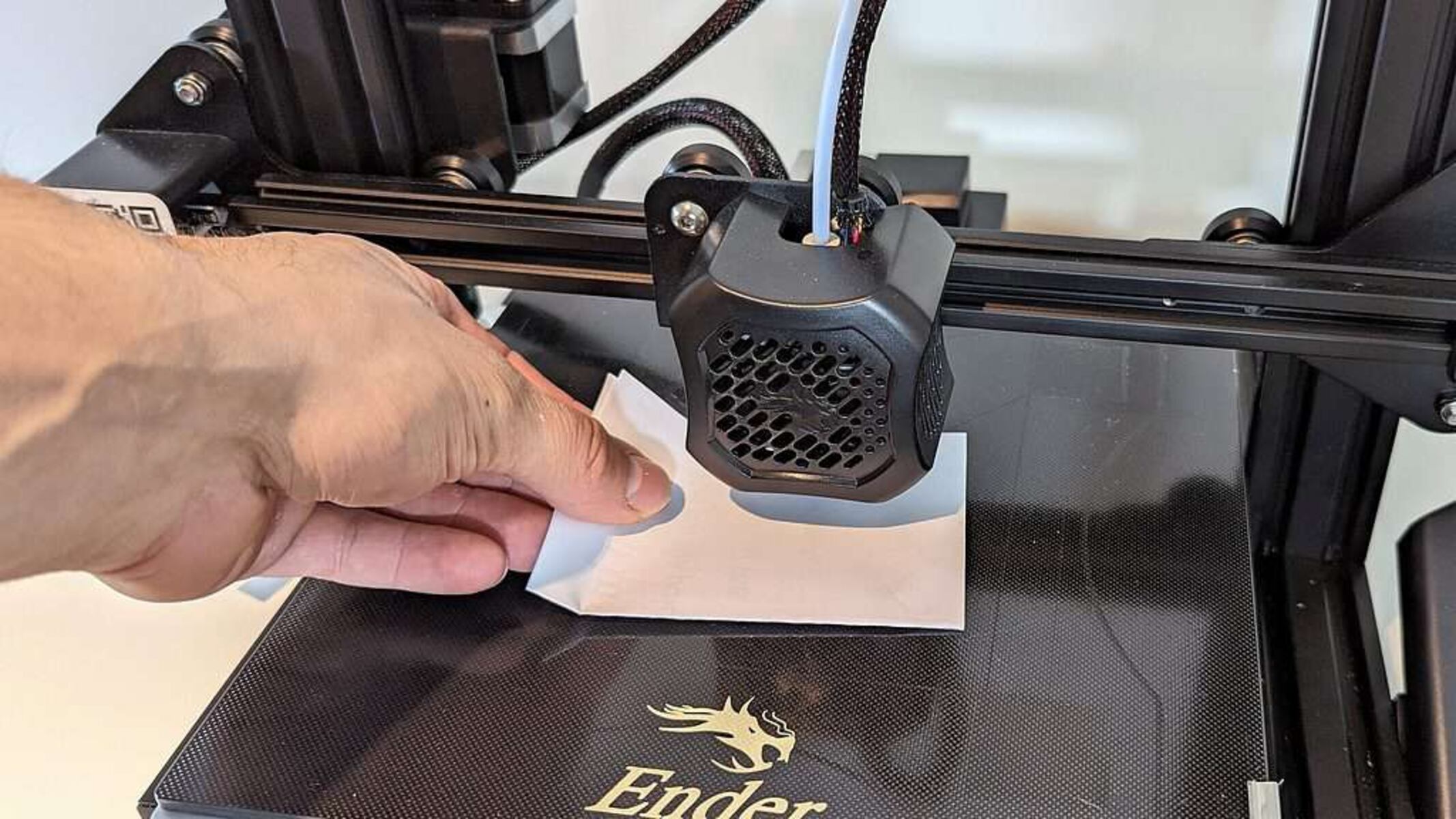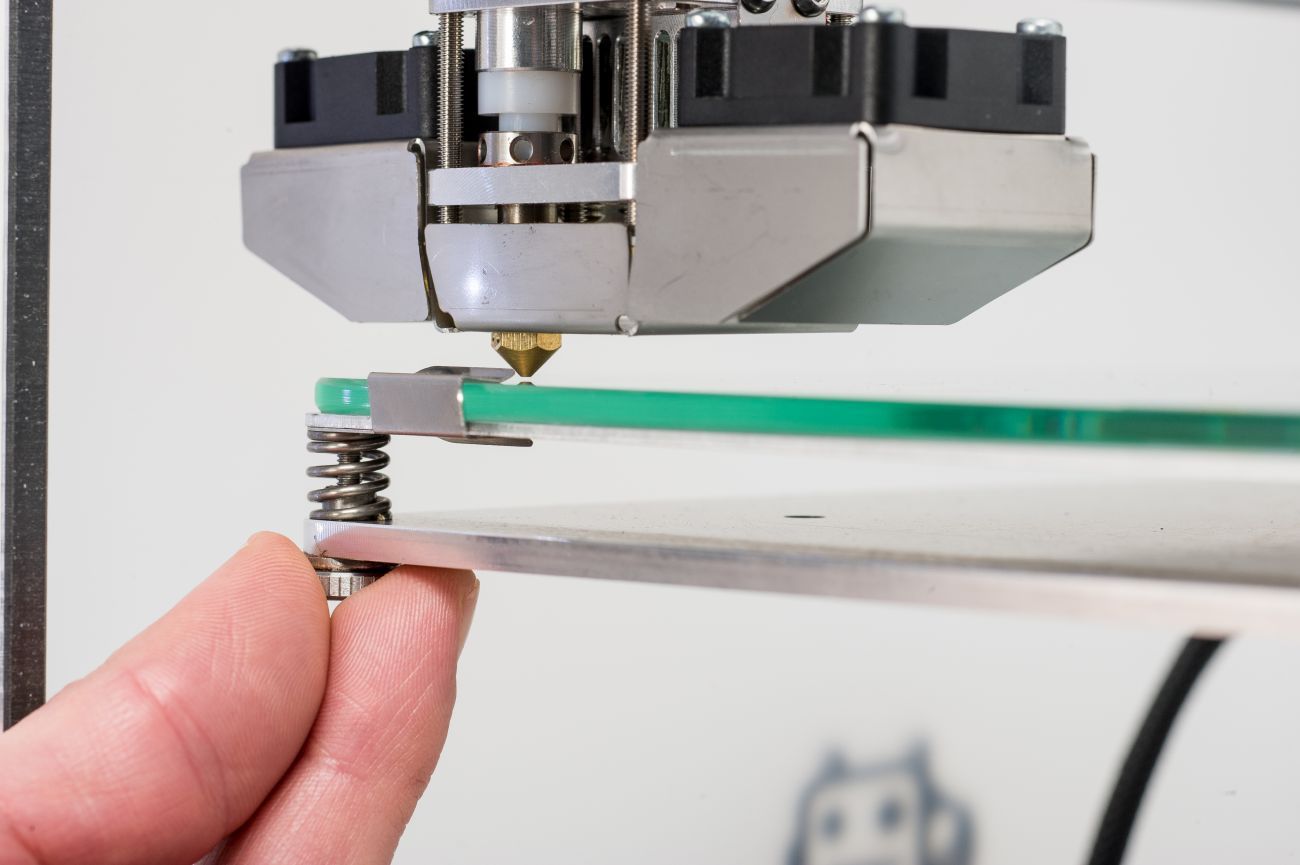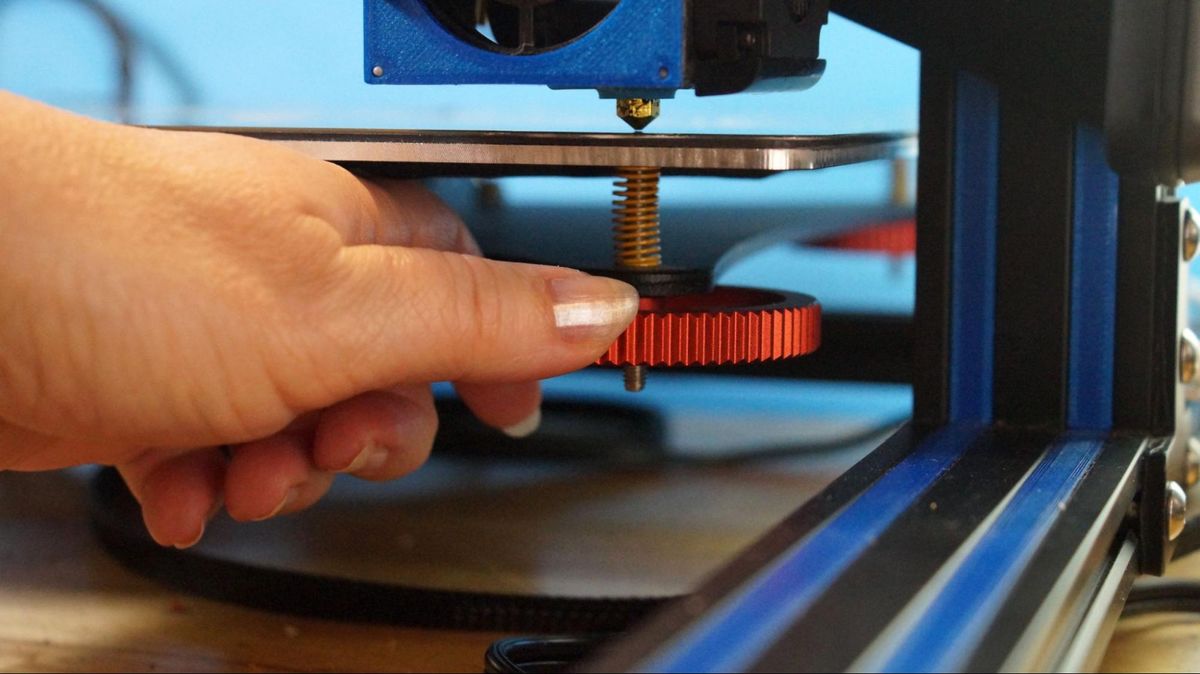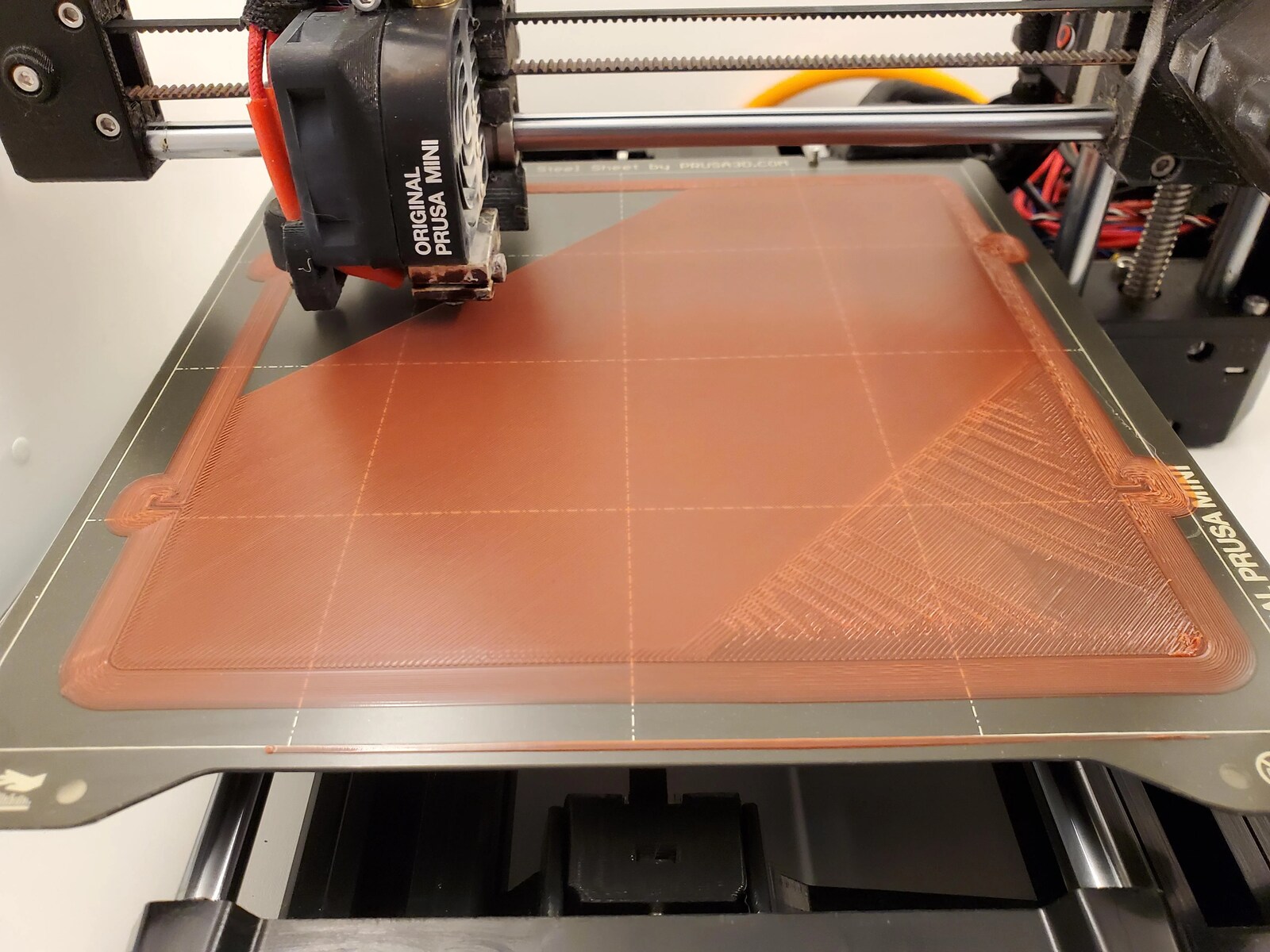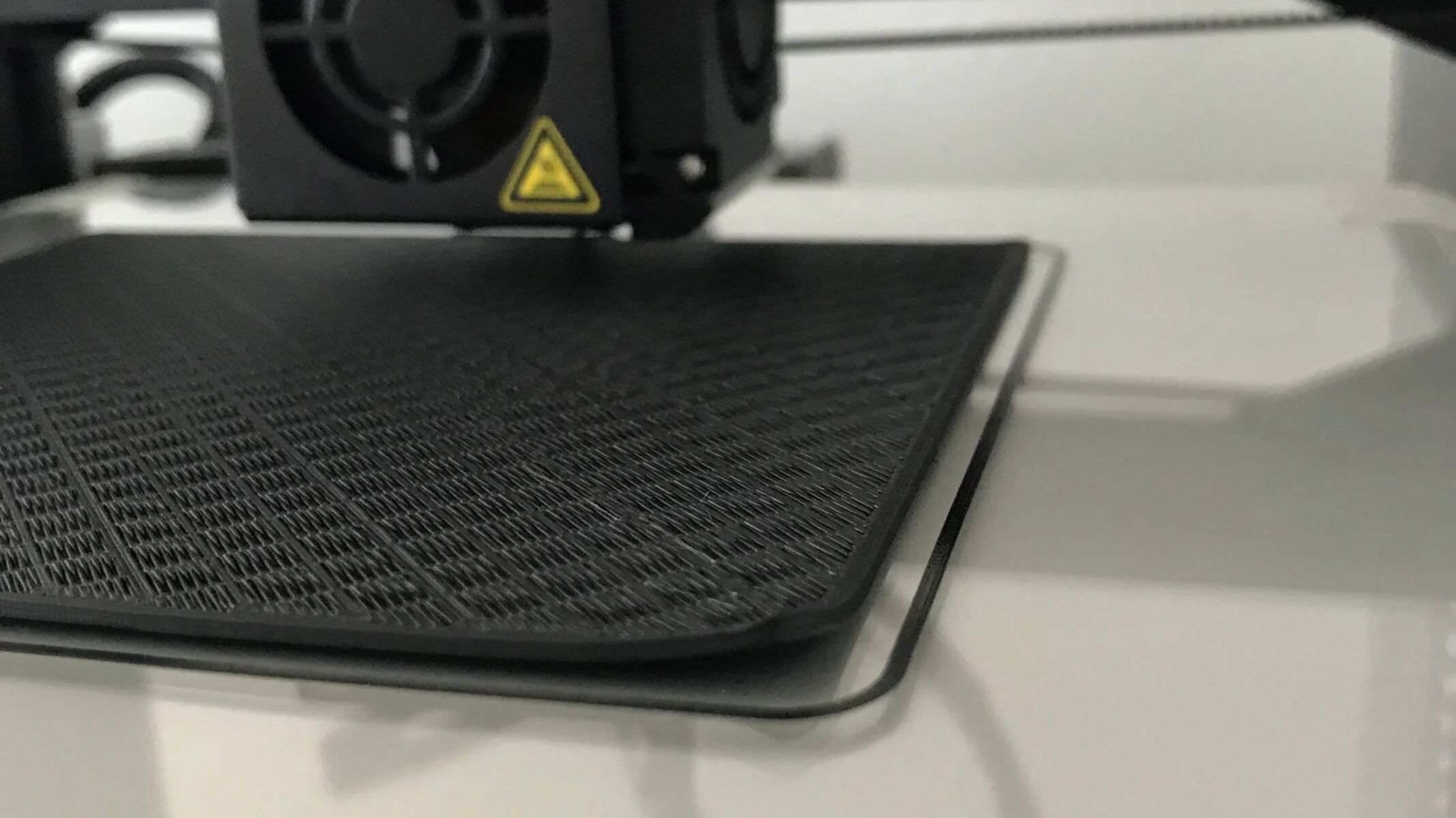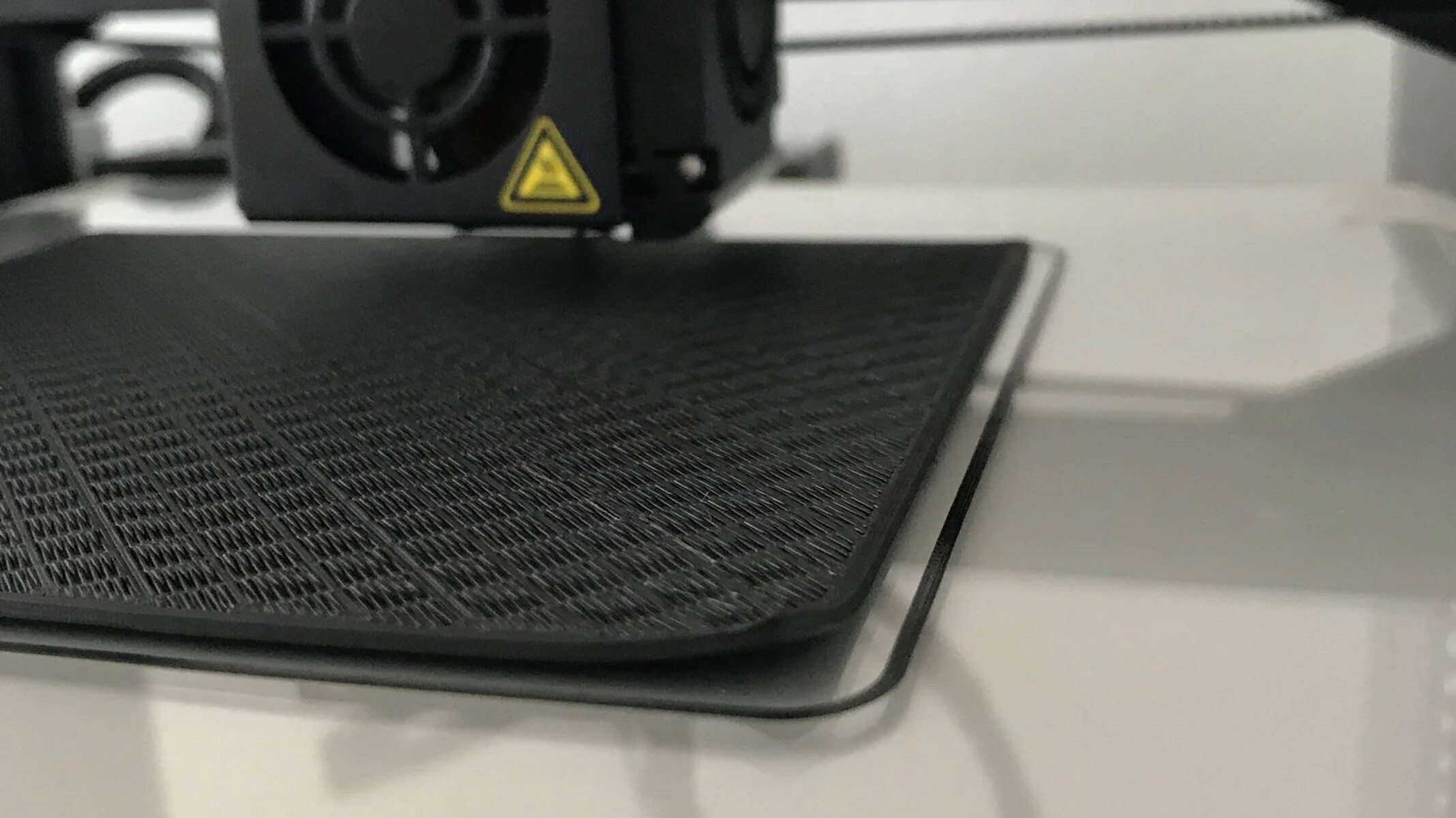Introduction
Welcome to the world of 3D printing! As a 3D printer enthusiast, you know that achieving high-quality prints requires precise calibration of your machine. One essential tool in your arsenal for this calibration process is a feeler gauge. In this article, we will explore how to effectively use a feeler gauge with your 3D printer to achieve optimal results.
But first, let’s understand what exactly a feeler gauge is and why it is crucial for 3D printing.
A feeler gauge is a thin strip of metal, typically made of stainless steel, with various thickness measurements marked along its edge. These measurements are usually in the range of 0.05mm to 1mm. Feeler gauges are commonly used in automotive and engineering industries to measure gaps and clearances. In the world of 3D printing, they play a vital role in ensuring accurate bed leveling and proper spacing between the printer’s nozzle and the print bed.
Now, you might be wondering why a feeler gauge is so important for 3D printing. Well, in order to achieve precise and consistent prints, it is crucial to have a properly leveled print bed and an adequate nozzle height from the bed. Uneven bed leveling or incorrect nozzle height can result in issues such as poor adhesion, layer shifting, and uneven print surfaces. To avoid these problems and achieve high-quality prints, regular calibration using a feeler gauge is necessary.
Throughout this article, we will guide you step by step on how to effectively use a feeler gauge for calibrating your 3D printer. From choosing the right feeler gauge to fine-tuning the bed level, we will cover the entire process. By following these steps, you will be able to ensure that your prints adhere firmly to the bed, layers are properly aligned, and the overall print quality is greatly improved.
So, let’s dive in and explore the world of feeler gauges and 3D printer calibration for the best printing experience!
What is a Feeler Gauge?
A feeler gauge is a precision measuring instrument that consists of a series of thin metal strips of varying thicknesses. These strips are usually made of stainless steel and have measurements marked along their edges. The measurements can be in metric or imperial units, depending on the type of feeler gauge.
The main purpose of a feeler gauge is to measure the gap or clearance between two objects. It is commonly used in automotive, engineering, and mechanical applications where precise measurements are crucial. The thin metal strips of the feeler gauge allow it to easily slide into tight spaces and accurately determine the gap size.
Feeler gauges are available in different sets, each containing a range of thicknesses. The thickness measurements are typically marked on the strips themselves, making it easy to identify the size during measurements. The most common range for feeler gauges is 0.05mm to 1mm, although variations can be found depending on the intended use.
The feeler gauge is a versatile tool that can be used in various applications. In addition to measuring gaps, it is also useful for determining clearances, checking tolerances, adjusting valve lash, and setting ignition points, among other functions. It is an essential tool in the toolkit of mechanics, machinists, and 3D printing enthusiasts.
When it comes to 3D printing, the feeler gauge plays a crucial role in calibrating the printer’s bed level and ensuring the correct nozzle height. It helps in achieving a flat and level printing surface, which is vital for proper adhesion and consistent print quality. By using a feeler gauge, you can ensure that the nozzle is at the ideal distance from the print bed, resulting in precise layer deposition and improved overall print accuracy.
Feeler gauges are relatively inexpensive and widely available, making them a practical investment for anyone involved in 3D printing. It is important to choose a feeler gauge with high accuracy and durability to ensure reliable and consistent measurements over time.
In the next sections, we will delve into the specifics of using a feeler gauge with a 3D printer. We will guide you through the steps of preparing the printer, calibrating the bed level, checking the nozzle height, and fine-tuning the adjustments. Let’s get started on your journey to achieving unparalleled print quality!
Why is a Feeler Gauge Important for 3D Printing?
Accuracy is key when it comes to 3D printing. The success of your prints depends on various factors, one of the most crucial being the proper calibration of your 3D printer. This is where a feeler gauge becomes essential.
A feeler gauge is important for 3D printing because it helps achieve precise bed leveling and nozzle height. These factors directly impact print quality and adhesion:
1. Bed Leveling: Properly leveling the print bed is crucial for ensuring a flat and even surface. If the bed is not level, the first layer of your print may not adhere properly, leading to issues like warping, poor adhesion, or even the print detaching from the bed entirely. A feeler gauge allows you to accurately measure the gap between the nozzle and the print bed at various points, ensuring consistent and optimal bed leveling.
2. Nozzle Height: The distance between the nozzle and the print bed, also known as the nozzle height or Z-axis offset, is critical for achieving precise layer deposition. If the nozzle is too close to the bed, the filament may get squished, causing clogging or poor flow. On the other hand, if the nozzle is too far from the bed, the filament may not adhere properly, leading to weak or failed prints. A feeler gauge helps in determining the ideal nozzle height for optimal print quality.
Using a feeler gauge during the calibration process ensures that the print bed is level and the nozzle is at the correct height, resulting in improved first layer adhesion, better print surface quality, and increased dimensional accuracy.
Furthermore, regular calibration using a feeler gauge helps maintain the quality of your prints over time. As your 3D printer goes through continuous use, vibrations, temperature changes, and other factors can impact the bed level and nozzle height. By periodically checking and adjusting these settings with a feeler gauge, you can ensure consistent print quality and avoid potential issues that may arise due to misalignment.
In summary, a feeler gauge is vital for 3D printing because it enables you to achieve precise bed leveling and nozzle height. By using a feeler gauge to calibrate your 3D printer, you can enhance print quality, improve adhesion, and ensure consistent and accurate prints.
Now that we understand the importance of a feeler gauge in 3D printing, let’s move on to the step-by-step process of using it effectively for calibrating your printer.
Step 1: Choosing the Right Feeler Gauge
When it comes to using a feeler gauge for 3D printing, the first step is choosing the right gauge for your specific needs. Here are some factors to consider:
1. Thickness Range: Feeler gauges come in different ranges of thickness measurements. It’s important to select a gauge that covers the range of measurements suitable for your printer. The most common range for 3D printing applications is between 0.05mm and 1mm. Ensure that the feeler gauge you choose includes thicknesses within this range.
2. Accuracy: Accuracy is crucial when it comes to measuring small gaps and clearances. Look for a feeler gauge that offers high precision and accuracy in its measurements. This will ensure that your calibration process is reliable and results in accurate adjustments.
3. Material Quality: The material quality of the feeler gauge is important for durability and longevity. Stainless steel is a common material used for feeler gauges due to its corrosion resistance and strength. Choose a gauge made from high-quality stainless steel to ensure it can withstand continuous use without bending or breaking.
4. Flexibility: The feeler gauge needs to be flexible enough to easily slide between the nozzle and the print bed. This flexibility allows for accurate measurements and an efficient calibration process. Look for a gauge that is thin and pliable, making it easy to access tight spaces and achieve precise readings.
5. Compatibility: Ensure that the feeler gauge you choose is compatible with your 3D printer’s specifications. Take into account the size and design of your printer’s print bed and nozzle. Some feeler gauges may have specific dimensions or shapes that work better with certain printer models, so check for compatibility before making a purchase.
6. Ease of Use: Consider the user-friendliness of the feeler gauge. Look for one with clear and easy-to-read measurement markings. It should also be comfortable to hold and manipulate during the calibration process.
Remember that investing in a high-quality feeler gauge is an investment in accurate and consistent 3D prints. Spending a little more on a reliable gauge will save you time and frustration in the long run.
Now that you’ve chosen the right feeler gauge, you’re ready to move on to the next step: preparing your 3D printer for calibration and adjustment.
Step 2: Preparing the Printer for Calibration
Before you begin the calibration process with the feeler gauge, it’s crucial to properly prepare your 3D printer. Follow these steps to ensure everything is ready:
1. Warm up the Printer: Start by turning on your 3D printer and allowing it to warm up to the recommended operating temperature. This will ensure that all components, including the print bed and nozzle, are at the desired temperature for accurate calibration.
2. Clean the Print Bed: Ensure that the print bed is clean and free from any debris, dust, or leftover filament. Use a gentle cleaning solution or isopropyl alcohol to wipe the surface clean. This will help prevent any interference during the calibration process and ensure proper adhesion of the filament.
3. Home the Printer: Use your printer’s control panel or software to home the printer’s X, Y, and Z axes. This will position the print nozzle at the origin point, ready for calibration and printing.
4. Disable Auto-Leveling: If your printer has an auto-leveling feature, disable it for the calibration process. Auto-leveling systems can interfere with the manual adjustments you’ll be making with the feeler gauge. Check your printer’s manual or settings to disable this feature temporarily.
5. Check Belts and Screws: Take a moment to inspect the belts and screws on your 3D printer. Ensure that they are tightened properly and free from any damage. Loose or worn-out belts and screws can cause inaccuracies during printing and calibration.
By properly preparing your 3D printer, you set the foundation for a successful calibration process. The cleanliness of the print bed, the correct homing of the axes, and the disablement of auto-leveling systems all contribute to more accurate and reliable results.
In the next step, we will guide you through the process of calibrating the bed level using the feeler gauge. This step is integral to achieving optimal print quality and ensuring proper adhesion of your 3D prints. Let’s dive into the exciting world of 3D printer calibration!
Step 3: Calibrating the Printer’s Bed Level
Calibrating the bed level of your 3D printer is a crucial step in ensuring proper adhesion and accurate prints. Follow these steps to calibrate the bed level using a feeler gauge:
1. Position the Nozzle: Use your printer’s controls to move the print head/ nozzle to the first calibration point or corner of the print bed. Ensure that the nozzle is just above the bed without touching it.
2. Select the Feel Gauge: Choose the appropriate thickness feeler gauge from your set that corresponds to the desired first layer height. For example, if your desired first layer height is 0.2mm, select a feeler gauge with a thickness close to that value.
3. Insert the Feeler Gauge: Gently slide the selected feeler gauge between the nozzle tip and the print bed at the calibration point. The gauge should have a slight resistance, but you should still be able to move it freely. If the gauge is too loose or tight, adjust the bed level accordingly.
4. Adjust the Bed Level: Use the printer’s controls to adjust the bed level at the calibration point. Some printers have manual adjustment screws or knobs, while others have automated bed leveling systems. Follow the printer’s instructions to make the necessary adjustments until the feeler gauge slides snugly under the nozzle without any force.
5. Repeat the Process: Move the print head/ nozzle to the next calibration point or corner of the bed. Repeat steps 3 and 4 for each calibration point, making adjustments as necessary to ensure a consistent and proper bed level across the entire print surface.
Note: Some 3D printers may have additional calibration features or procedures. Consult your printer’s manual or manufacturer’s instructions for any specific guidelines or settings that may apply.
By calibrating the bed level using a feeler gauge, you ensure that the nozzle-to-bed distance is consistent throughout the print surface. This promotes optimal first layer adhesion and prevents issues like uneven printing or detached prints.
Remember to repeat this calibration process periodically, especially if you notice any issues with print quality or bed adhesion. Regular calibration helps maintain the accuracy and performance of your 3D printer.
Next, we will move on to the crucial step of checking the nozzle height to ensure proper filament flow and optimal print quality.
Step 4: Checking the Nozzle Height
Checking and adjusting the nozzle height is an important step in 3D printer calibration. This ensures that the nozzle is at the correct distance from the print bed, allowing for proper filament flow and consistent layer deposition. Follow these steps to check the nozzle height using a feeler gauge:
1. Home the Printer: Use the printer’s controls to home the print head/ nozzle, bringing it to the origin point or starting position.
2. Select the Feel Gauge: Choose a feeler gauge with a thickness that corresponds to the desired first layer height. This measurement will vary depending on your specific printer and desired print settings.
3. Position the Nozzle: Move the print head/ nozzle to a corner or designated calibration point on the print bed. Ensure that the nozzle is just above the bed without touching it.
4. Slide the Feel Gauge: Carefully insert the selected feeler gauge between the nozzle and the bed at the calibration point. Gently slide it back and forth to determine the gap between the two. The gauge should have slight resistance, but still allow for smooth movement.
5. Adjust the Nozzle Height: Make adjustments to the nozzle height as necessary. Use the printer’s controls to raise or lower the nozzle until the feeler gauge fits snugly between the nozzle and the bed, without any excessive force or tightness.
6. Repeat the Process: Move the print head/ nozzle to other calibration points on the bed and repeat steps 4 and 5. Ensure consistent nozzle height across all calibration points.
It is important to regularly check and adjust the nozzle height, especially before starting a new print or if you notice any printing issues such as poor adhesion or inconsistent layers. Proper nozzle height ensures that the filament is deposited at the right distance from the bed, leading to accurate prints with clean, well-defined layers.
Remember to fine-tune the nozzle height using small incremental adjustments to achieve the desired result. Be mindful of the feeler gauge’s thickness and the specific requirements of your printer.
In the next step, we will focus on adjusting the printer’s Z-axis to achieve optimal print quality and improve overall accuracy.
Step 5: Adjusting the Printer’s Z-axis
The Z-axis adjustment is a critical step in achieving optimal print quality and proper layer adhesion. It ensures that the printer’s nozzle is at the correct distance from the print bed throughout the entire printing process. Follow these steps to adjust the Z-axis using a feeler gauge:
1. Select the Feel Gauge: Choose a feeler gauge with a thickness that corresponds to the desired first layer height, similar to the one used in the previous steps. Ensure that the gauge is clean and free from any debris.
2. Home the Printer: Use the printer’s controls to home the print head/ nozzle, bringing it to the origin point or starting position.
3. Position the Nozzle: Move the print head/ nozzle to a calibration point on the print bed, preferably near the center of the bed.
4. Insert the Feel Gauge: Carefully slide the selected feeler gauge between the nozzle and the print bed at the calibration point. Ensure that the gauge touches both the nozzle and the bed with a slight resistance.
5. Adjust the Z-axis: Use the printer’s controls to adjust the Z-axis height or nozzle offset. Incrementally lower or raise the nozzle until the feeler gauge slides smoothly with a slight resistance. Aim for a snug fit without forcing or jamming the gauge.
6. Repeat and Fine-tune: Move the print head/ nozzle to different calibration points on the bed and repeat steps 4 and 5. Fine-tune the Z-axis adjustment as necessary to maintain a consistent nozzle-to-bed distance.
By adjusting the printer’s Z-axis using a feeler gauge, you ensure that the nozzle maintains the correct distance from the bed throughout the entire printing process. This allows for proper filament flow and accurate layer deposition, resulting in high-quality prints with excellent detail and adhesion.
It’s important to regularly check and readjust the Z-axis height, especially if you notice any issues with first layer adhesion or print quality. Proper Z-axis adjustment contributes to the overall success and accuracy of your 3D prints.
In the next step, we will focus on fine-tuning the bed level to ensure its flatness and consistency, further optimizing print quality.
Step 6: Fine-tuning the Bed Level
After calibrating the bed level and adjusting the Z-axis, it’s time to fine-tune the bed level for optimal print quality. Fine-tuning ensures that the print bed is flat, level, and consistent across its surface. Follow these steps to fine-tune the bed level:
1. Start with a Test Print: Choose a calibration or test print that includes multiple layers or a large flat surface. This will help you assess the bed level and make necessary adjustments.
2. Observe the First Layer: As the test print begins, closely observe the first layer being deposited. Look for any signs of uneven adhesion or gaps between the lines of filament. Note any areas that require adjustment.
3. Adjust the Bed Level: Use your printer’s controls to make small adjustments to the bed level based on your observations. Raise or lower specific areas of the bed, focusing on problem spots identified during the first layer deposition. Refer back to the feeler gauge and adjust accordingly.
4. Repeat the Test Print: After making adjustments, repeat the test print to see if the bed level has improved. Assess the first layer and compare it with the previous print. Note any remaining areas that need fine-tuning.
5. Iteratively Make Adjustments: Continue iteratively adjusting the bed level, focusing on problem areas, and repeating the test print until you achieve consistent adhesion and a properly leveled bed. Remember to make small and incremental adjustments to avoid overcompensating.
Note: Depending on your printer and preferences, you may also use additional techniques like using adhesive aids such as glue sticks, painter’s tape, or specialized bed adhesives for certain materials. These can help improve print bed adhesion and compensate for slight bed level discrepancies.
By fine-tuning the bed level, you ensure that the print bed is uniform and level throughout its surface. This promotes consistent filament deposition, proper layer adhesion, and overall print quality.
Remember that fine-tuning is an ongoing process. As your printer goes through regular use and environmental changes, it’s important to periodically check and adjust the bed level to maintain optimal performance.
Now that you have fine-tuned the bed level, let’s move on to the last step, where we discuss the importance of repeating the calibration process as needed.
Step 7: Repeating the Process if Necessary
Even after completing the calibration and fine-tuning process, it’s important to remember that 3D printers can experience changes over time. Variables such as environmental factors, printer usage, and wear and tear can affect the bed level and overall print quality. Therefore, it is necessary to repeat the calibration process periodically or when specific issues arise. Here’s what you need to keep in mind:
1. Printing Issues: If you encounter any printing issues such as poor adhesion, inconsistent layers, or warping, it is wise to revisit the calibration process. These issues can indicate a need for readjusting the bed level or nozzle height.
2. Maintenance Schedule: Establish a routine maintenance schedule for your 3D printer that includes regular calibration. The frequency will depend on factors such as printer usage and environmental conditions, but consider calibrating every few weeks or after a certain number of prints.
3. Monitor Print Quality: Keep an eye on the quality of your prints. If you notice any changes, such as gaps between layers, over or under extrusion, or inconsistent adherence, it might be time to reevaluate the bed level and other calibration settings.
4. Environmental Changes: Changes in humidity, temperature, or the physical location of your printer can affect its performance and calibration. Keep these factors in mind and make necessary adjustments when needed.
5. Stay Up-to-Date: As you become more experienced with 3D printing, you might discover new techniques, tools, or software updates that can improve calibration. Stay informed and incorporate new knowledge into your calibration process for the best results.
By repeating the calibration process when necessary, you can maintain optimal print quality and overall performance of your 3D printer. The more consistent and precise your calibration, the better your prints will be.
Remember that each printer model might have specific calibration instructions or features, so consult your printer’s manual or manufacturer guidelines for any additional recommendations or steps to follow.
With consistent and careful calibration, you’ll be able to produce high-quality prints with accuracy and reliability.
Conclusion
Congratulations! By following the step-by-step process outlined in this article, you have learned how to effectively use a feeler gauge to calibrate your 3D printer. Proper calibration is essential for achieving high-quality prints with accurate layer deposition, optimal adhesion, and consistent results.
Throughout the calibration process, we covered important steps such as choosing the right feeler gauge, preparing the printer for calibration, calibrating the bed level, checking the nozzle height, adjusting the Z-axis, fine-tuning the bed level, and repeating the process when necessary.
Remember, the results of 3D printing depend heavily on the precision and accuracy of your calibration. By choosing a reliable feeler gauge, ensuring proper bed leveling, adjusting the nozzle height and Z-axis, and fine-tuning the bed level, you can optimize your printer’s performance and achieve the best possible print quality.
Periodically reevaluating and readjusting the calibration is crucial to account for changes that may occur over time. By staying vigilant and monitoring your print quality, you can identify and address any issues promptly, ensuring consistent and excellent results.
Don’t forget to consult your printer’s manual or manufacturer’s guidelines for specific instructions and features related to your particular printer model. Each printer may have unique calibration requirements, and staying informed will help you make the most out of your 3D printing experience.
With your newfound knowledge and skills, you are well-equipped to take your 3D printing to the next level. Enjoy the journey of creating amazing designs and bringing them to life with precision and excellence!







